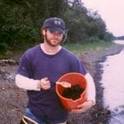
Article
Effects of River Restoration on Riparian Biodiversity in Secondary Channels of the Pite River, Sweden
Environmental Management
(2012)
Abstract
Between 1850 and 1970, rivers throughout Sweden were channelized to facilitate timber floating. Floatway structures were installed to streamline banks and disconnect flow to secondary channels, resulting in simplified channel morphologies and more homogenous flow regimes. In recent years, local authorities have begun to restore channelized rivers. In this study, we examined the effects of restoration on riparian plant communities at previously disconnected secondary channels of the Pite River. We detected no increase in riparian diversity at restored sites relative to unrestored (i.e., disconnected) sites, but we did observe significant differences in species composition of both vascular plant and bryophyte communities. Disconnected sites featured greater zonation, with mesic-hydric floodplain species represented in plots closest to the stream and mesic-xeric upland species represented in plots farthest from the stream. In contrast, restored sites were most strongly represented by upland species at all distances relative to the stream. These patterns likely result from the increased water levels in reconnected channels where, prior to restoration, upland plants had expanded toward the stream. Nonetheless, the restored fluvial regime has not brought about the development of characteristic flood-adapted plant communities, probably due to the short time interval (ca. 5 years) since restoration. Previous studies have demonstrated relatively quick responses to similar restoration in single-channel tributaries, but secondary channels may respond differently due to the more buffered hydrologic regimes typically seen in anabranching systems. These findings illustrate how restoration outcomes can vary according to hydrologic, climatic and ecological factors, reinforcing the need for site-specific restoration strategies.
Keywords
- Biodiversity,
- Boreal,
- Bryophyte,
- Off-channel habitat,
- Restoration,
- Riparian,
- River,
- Secondary channel,
- Vegetation
Disciplines
Publication Date
2012
Publisher Statement
Environmental Management, © Springer International Publishing AG The final publication is available at Springer via http://dx.doi.org/10.1007/s00267-011-9773-6.
Citation Information
James M. Helfield, Johanna Engstrom, James T. Michel, Christer Nilsson, et al.. "Effects of River Restoration on Riparian Biodiversity in Secondary Channels of the Pite River, Sweden" Environmental Management Vol. 49 (2012) Available at: http://works.bepress.com/helfield_james/3/
